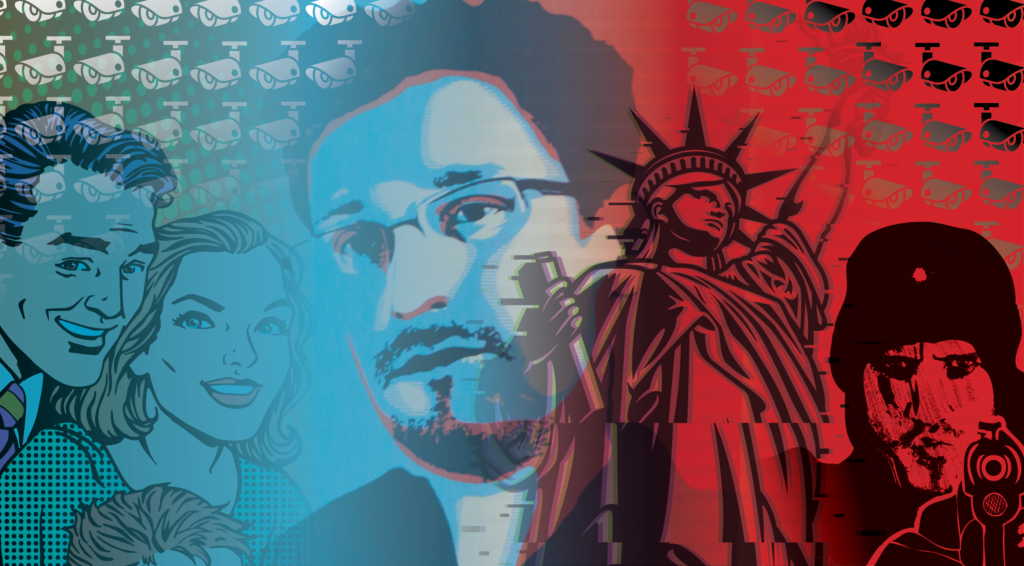
When it comes to education, pen and paper simply aren’t enough these days. Even just twenty years ago, the most technology students would see in a classroom was the occasional TV cart for educational films. However, in today’s schools, classroom technology is far more than the occasional classroom movie. These days, it’s a necessity.
Even before the COVID-19 pandemic forced classes online, education technology was revolutionizing the way students learn. From software programs like Schoology to the prevalence of SMART Boards, education technology is used in a variety of ways with one overarching goal: To help students learn and retain information better. To help achieve this goal, many schools have begun to distribute laptops and tablets to students. After all, many projects must be completed and turned in online, and issuing school laptops can ensure all students have equal access to their assignments. While this free distribution of education technology is a noble act, particularly for students who can’t afford premium technology on their own, the technology comes with a massive caveat.
In nearly all cases, school-issued technology is installed with monitoring software. While monitoring software is necessary in some capacities, like ensuring students aren’t playing games on their laptops during class, many software programs are concerningly complex. As education becomes more and more digitized, it’s fair to ask: How much should schools know about their students?
The State of Surveillance
Monitoring students during school isn’t anything new. After all, schools act as students’ guardians during the school day, so it makes sense to observe, monitor, and occasionally report students for illicit or unsafe activities. However, with the rise of technology in schools, students began to spend much of their time online. Naturally, a school’s desire to observe, monitor, and report extends to the digital world as well. Today, a wealth of software programs including Bark, Gnosis IQ, Gaggle, and Lightspeed are installed on student devices to monitor their online interactions[1].
And this monitoring isn’t limited to school either. Even outside of the classroom, these software programs utilize artificial intelligence and human moderators to monitor students’ private chats, documents, and emails[1]. If a student searches for something related to, say, self-harm, the software can send an alert to the school district, allowing teachers to message students within minutes. While this strategy can help prevent self-harm, family abuse, and other dangerous situations, it’s clear that student privacy is sacrificed in exchange for this goal.
With the sheer amount of surveillance that students face, few would argue that student privacy isn’t violated. The question, however, is if this sacrifice of privacy is worth it. Proponents of school surveillance argue that it helps schools keep tabs on students, so if a particular child is in danger, the school can take action. In fact, one of Gaggle’s main selling points is its claim that the software saves hundreds of lives per year[2]. While this statement may be exaggerated, the software certainly helps identify students in need quickly.
On the other hand, those against tracking argue that surveillance invades privacy and deters free speech. After all, if you know a live human is watching every email or message you send, you may be more careful about what you type. Ultimately, this tracking software expands the classroom walls to home life, making children feel like they’re being watched all day, every day. Although school surveillance works in some cases, it also has several unintended consequences.
The Harms of School Monitoring
First, the psychological harm to students from endless surveillance can not be understated. In fact, a study found that 53% of students don’t share their true thoughts online because of surveillance, and 77% say they’re more careful about what they search online[3]. After all, students aren’t dumb; they know when they’re being tracked, and would rather censor their own behaviors than potentially deal with their messages or searches being flagged. The study states:
Systematic monitoring of online activity can reveal sensitive information about students’ personal lives, such as their sexual orientation, or cause a chilling effect on their free expression, political organizing, or discussion of sensitive issues such as mental health[3].
Because of the surveillance, students are scared to have conversations about tough topics. This causes students to avoid talking about them at all to avoid potential punishment from schools.
In addition to the psychological effects, surveillance software disproportionately harms minority students as well. Artificial intelligence programs are more likely to flag language spoken by Black students[4]. This is because of the lack of minority voices during the training of the AI, and the lack of diversity in the AI field in general[5]. This issue is exasperated by the fact that Black and Hispanic students use school devices at a higher rate than white students. Additionally, surveillance AI targets LGBTQ students as well, by flagging innocent words like “gay” and “lesbian[5].” Ultimately, it’s clear that student monitoring software does not judge every student equally.
Finally, vulnerabilities found in these software programs increase the risk of data breaches and other privacy incidents. In 2020, ProctorU, a software that monitors students during tests, was breached by cybercriminals, resulting in the leak of over 440,000 students’ emails, passwords, addresses, and phone numbers[6]. More concerningly, in 2021, researchers found vulnerabilities in Netop, another student monitoring software. In this case, they found a bug that could allow hackers to install malware, or even gain access to students’ webcams[7]. At the end of the day, software like this is just another way for cybercriminals to make a quick buck while wreaking digital havoc.
Can Safety and Privacy Coexist?
Here’s the thing: Keeping tabs on students isn’t a bad thing. In fact, that’s practically the entire purpose of a school. But as education becomes more digitized, there ought to be a balance between keeping students safe and respecting their privacy. Of course, some tracking is reasonable. Kids shouldn’t be playing games during instruction, and tracking software allows schools to see who isn’t paying attention. But monitoring students at home? At that point, students feel watched all day, thus less likely to type their true feelings. And making students feel like they have to constantly hide their true beliefs and feelings isn’t a recipe for success. Safety and privacy can coexist, but right now, there are too many severe consequences associated with student monitoring software to make the sacrifice of privacy worth it.
About AXEL
No matter if you work in education, law, or business, cybercrime poses a threat to your industry. Thankfully, AXEL makes it easy to protect yourself from the threat of ransomware and data breaches. At AXEL, we believe that privacy is a human right and that your information deserves the best protection. That’s why we created AXEL Go. AXEL Go uses military-grade encryption, blockchain technology, and decentralized servers to ensure it’s the most secure file transfer software on the market. Whether you need to transfer large files or send files online, AXEL Go is the best cloud storage solution. If you’re ready to try the most secure file-sharing app for PC and mobile devices, get two free weeks of AXEL Go here.
[1] Crispin, Jessa. “American Schools Gave Kids Laptops during the Pandemic. Then They Spied on Them | Jessa Crispin.” The Guardian. Guardian News and Media, October 11, 2021. https://www.theguardian.com/commentisfree/2021/oct/11/us-students-digital-surveillance-schools
[2] Haskins, Caroline. “Revealed: How One Company Surveils Everything Kids Do and Say in School.” BuzzFeed News. BuzzFeed News, November 3, 2019. https://www.buzzfeednews.com/article/carolinehaskins1/gaggle-school-surveillance-technology-education
[3] Hankerson, DeVan, Cody Venzke, Elizabeth Laird, Hugh Grant-Chapman, and Dhanaraj Thakur. “Online and Observed.” CDT.org. Center for Democracy and Technology, September 2021. https://cdt.org/wp-content/uploads/2021/09/Online-and-Observed-Student-Privacy-Implications-of-School-Issued-Devices-and-Student-Activity-Monitoring-Software.pdf
[4] Chung, Anna. “How Automated Tools Discriminate against Black Language.” MIT Center for Civic Media, January 24, 2019. https://civic.mit.edu/2019/01/24/how-automated-tools-discriminate-against-black-language/
[5] Kshetri, Nir. “School Surveillance of Students via Laptops May Do More Harm than Good.” The 74 Million, January 19, 2022. https://www.the74million.org/article/school-surveillance-of-students-via-laptops-may-do-more-harm-than-good/
[6] Abrams, Lawrence. “ProctorU Confirms Data Breach after Database Leaked Online.” BleepingComputer. BleepingComputer, August 9, 2020. https://www.bleepingcomputer.com/news/security/proctoru-confirms-data-breach-after-database-leaked-online/
[7] McCracken, Harry. “Popular Student Monitoring Software Could Have Exposed Thousands to Hacks.” Fast Company. Fast Company, October 15, 2021. https://www.fastcompany.com/90686770/netop-student-monitoring-software-hack
